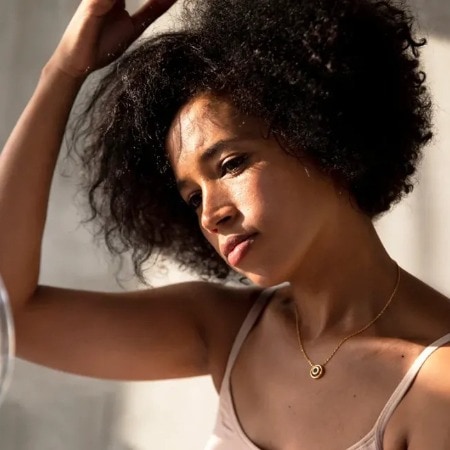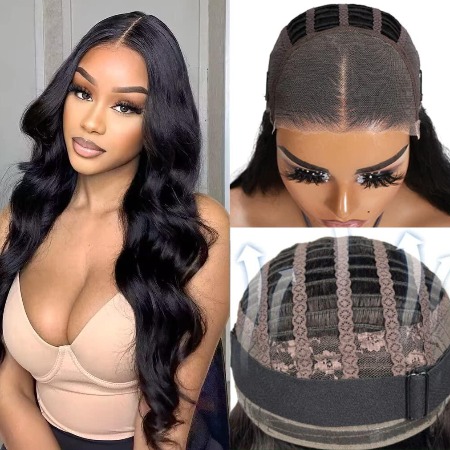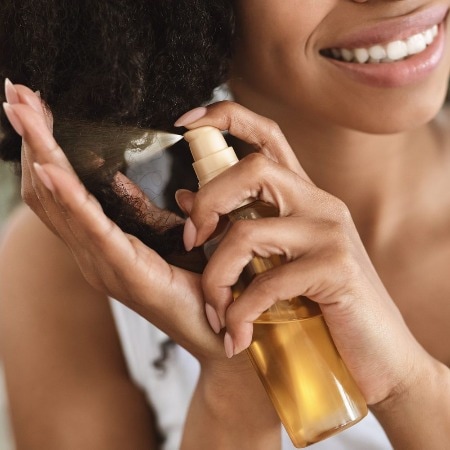
How to Grow Your Hair While Wearing Wigs
When it comes to wearing wigs, maintaining a good relationship with your natural hair is key. From choosing the right wig types to practical hair care tips you can embrace a straightforward, friendly, and simple approach to achieving the perfect balance between frequent wig-wearing and maintaining the health of your natural hair. Yes, you can have gorgeous, healthy hair while enjoying the versatility of your favorite wigs.

Jovo Jovanovic/Stocksy United
Understanding Hair Growth
When it comes to wearing wigs, the relationship you have with your natural hair matters. While hair growth is largely determined by genetics, age, and health. Maintaining proper scalp hygiene and working with your hair growth cycle is significant in retaining length. On average, hair grows at a rate of about 0.5 to 1.7 centimeters per month which is about 6 inches per year. So while you can never make your hair grow faster, there are ways to retain as much length as possible.
Contrary to a common misconception, wearing a wig does not stop natural hair growth. Hair growth is an intrinsic biological process regulated by the body's hormones and genetics. Regardless of whether one chooses to wear a wig or not, the hair follicles continue their natural cycle of growth, shedding, and regrowth. However, some factors related to wig usage may affect the appearance and health of natural hair. Friction, tension, and neglecting proper wig maintenance can impact the health of the natural hair. Therefore, it's essential to invest in high-quality wigs, practice proper wig maintenance, and maintain clean and healthy scalp hygiene, even while wearing wigs.

Hair Growing Tips & Maintaining Scalp Health
Maintaining healthy hair and scalp while wearing wigs involves a few key practices.
1. Wash your hair every 7-10 days to ensure cleanliness and health.
2. Regular scalp massages stimulate blood flow, promote hair growth, and reduce stress.
3. Utilize hair growth-promoting oils like Jamaican black castor oil, rosemary essential oil, amla oil, and sesame oil to nourish the scalp.

4. Conditioning with a hydrating conditioner helps moisturize, smooth, and repair the hair.
5. Avoid wearing wigs to sleep to allow your natural hair to breathe, and be cautious with edge control to prevent friction and tension on the hairline.
6. Opt for lightweight and comfortable wig types, such as glueless, V-part wigs and U-part wigs, to minimize stress on the hair and scalp.
7. Taking breaks from wearing wigs by embracing your natural hair for a few months or during relaxation at home is also beneficial for scalp health.
Choosing The Right Wig
Heat damage is not the only way to damage your hair. Friction and tension are factors that can damage your hair follicles, interrupt the natural hair growth cycle, and lead to hair damage. Here are some options and tips to help you choose the right wig:
Glueless Wigs
Glueless wigs are easy to install and remove, reducing the risk of hair damage caused by adhesives. They are a good option for those who want to protect their natural hair from chemicals and heat styling.
V-Part Wigs
V-part wigs have a V-shaped opening at the top, allowing for a more natural hairline. They offer a glueless installation feature, which can help prevent hair damage. However, V-part wigs may cause friction and tension on the hair near the roots, so it's essential to choose a wig with a comfortable fit and proper ventilation.
U-Part Wigs
U-part wigs have a U-shaped opening at the top or side, allowing you to blend your natural hair with the wig. They can provide better air circulation and reduce friction on the hairline. However, it's crucial to choose a wig with a secure fit to prevent hair damage.
Debunking Hair Myths
Let's clear up some common myths about growing your hair while wearing wigs. First off, washing your hair every 7-10 days is good for your scalp health, keeping it clean and free from product build-up. Don't worry about wearing wigs hindering hair growth; just opt for lightweight and comfy ones that reduce friction. Forget the myth that scalp massages are harmful – they're actually great for stimulating blood flow and promoting overall hair health. Using oils like Jamaican black castor oil and rosemary essential oil won't make your hair greasy; they nourish the scalp and encourage growth.
Growing and maintaining healthy hair while wearing wigs is absolutely doable with a few straightforward practices. Remember to prioritize proper scalp hygiene, choose the right wig types that suit your comfort and style, and follow simple hair care tips. Whether it's regular washing, gentle scalp massages, or using nourishing oils, taking care of your natural hair is key. By debunking common myths and embracing practical steps, you can confidently enjoy the versatility of wigs without compromising your hair health.
Related Articles
Is Salt Water Good for Your Hair?
How To Make Your Wig Look Real And Natural?
Let's Get Real About Wearing Wigs With Thinning Hair And Hair Loss
